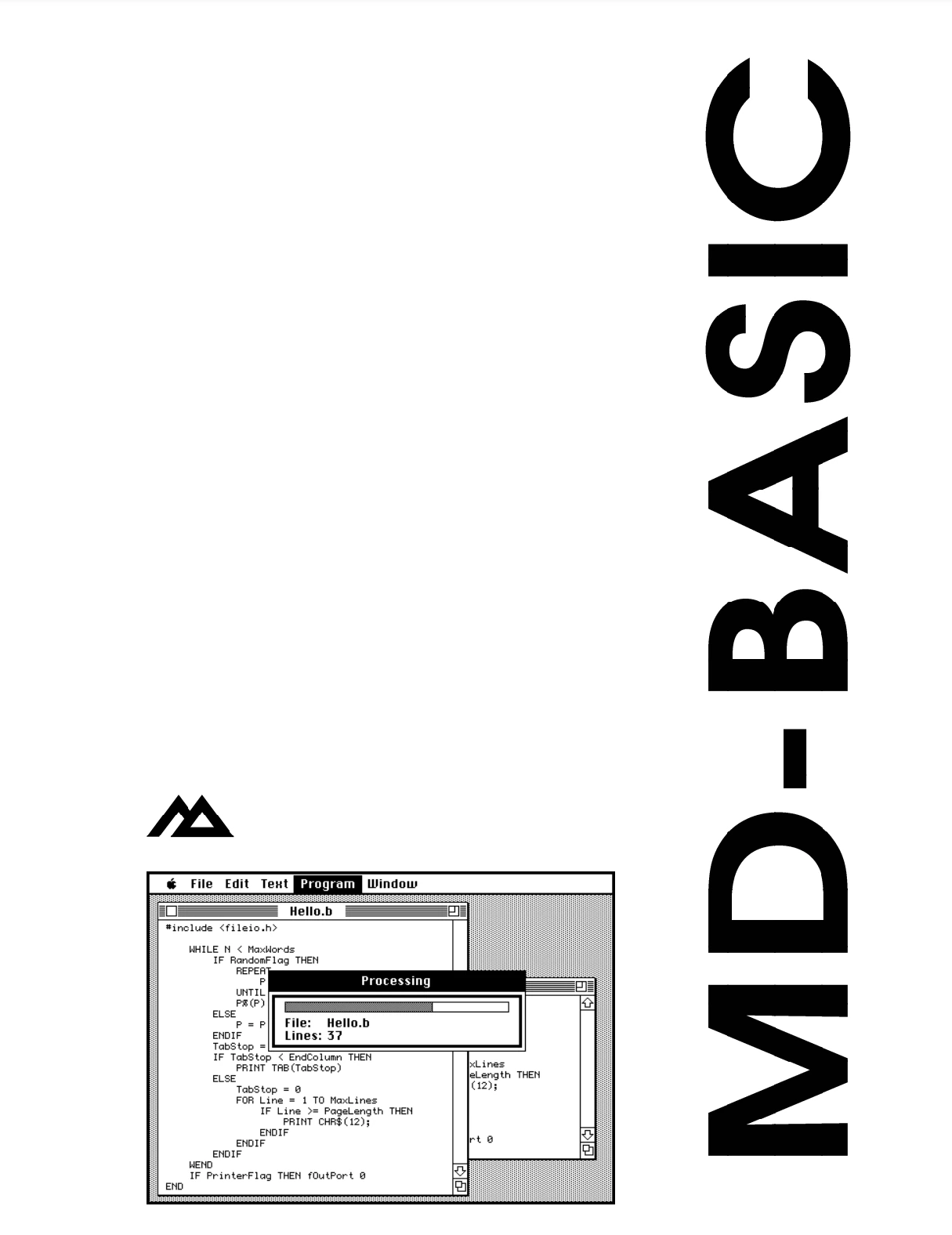ProLine had a fundamental challenge: it was built in Applesoft BASIC, the built-in language of every Apple II computer. Unfortunately, Applesoft was far from ideal for large-scale software. It relied on cryptic line numbers, had an awkward editing mode, and lacked modern programming structures. Managing ProLine’s sprawling, modular codebase in such a restrictive environment was a nightmare.
That frustration led to the creation of MD-BASIC, an Applesoft “processor” that worked more like a C compiler—bringing structure, organization, and efficiency to Applesoft programming.
A Modern Take on Applesoft
MD-BASIC transformed the way developers wrote Applesoft code. Instead of forcing programmers to wrestle with outdated syntax, it introduced modern programming constructs:
- IF-THEN-ELSE and WHILE-WEND loops for structured flow control
- Long, descriptive variable names instead of cryptic two-letter abbreviations
- No more line numbers! Code was now organized with labels, making it vastly more readable
But MD-BASIC didn’t just improve syntax—it also compiled Applesoft programs into highly optimized code. The result? More efficient memory usage and faster execution, all while allowing developers to write in a real text editor. No more struggling with Applesoft’s frustrating input mode—now, programs could be formatted properly and fully documented with meaningful comments.
GS+ magazine put it best:
“Applesoft may never get better, but writing programs in Applesoft just did. MD-BASIC changes the way people think about Applesoft.”
A Tool Built to Solve a Problem
Like most of my projects, MD-BASIC started as a personal tool. I built it to streamline ProLine’s development, but it quickly became clear that others were just as frustrated with Applesoft as I was. Soon, MD-BASIC became one of our best-selling products, retailing for $89.95.
The software itself was written in C, with some 65816 assembly, and it ran exclusively on the Apple IIGS. However, the Applesoft code it generated was fully compatible with all Apple II-series computers, ensuring broad usability across the platform.
In a playful nod to traditional BASIC conventions, the MD-BASIC manual even numbered its chapters by tens—just like old-school BASIC programmers numbered their lines.
With MD-BASIC, Applesoft programming became faster, easier, and far more readable. It didn’t change Applesoft itself, but it completely changed the way people wrote in it.
Download MD-BASIC
Disk
Download MD-BASIC-3.0.2mg (800K Apple ][ 2IMG Disk Image)
Manual
Download MD-BASIC-3.0.pdf (500K PDF - 100 pages)
Other Formats
Download MD-BASIC-3.0.img (800K DiskCopy Image)

Had MD-Basic and Beagle Compiler come out a little sooner, the world might have been a different place...
Picture a Beagle super product: my Rose16 editor saving files to your MD-Basic which passes the results to Alan's Beagle Compiler. It would have been a great integrated system for writing code! Although you'd have probably stuck with the slower microEmacs for your editor. :-)
You're about 20 years late, Randy. But great idea! It's too bad what happened at Beagle that caused us all to scatter and do our own thing.